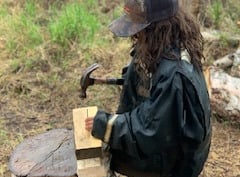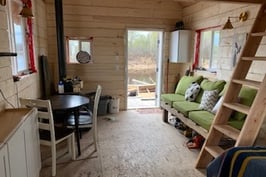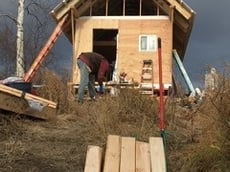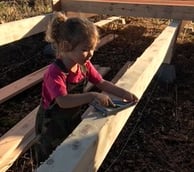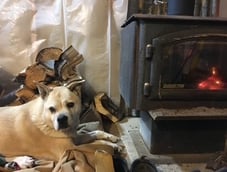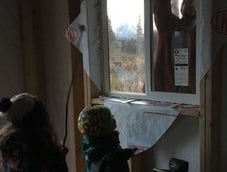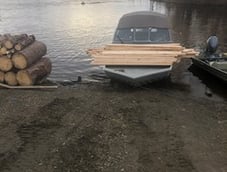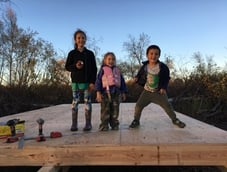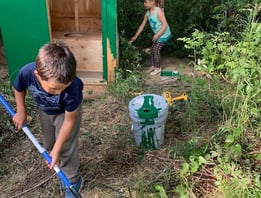Off the Grid (Cabin) Living
Sonta Roach
1/8/20254 min read
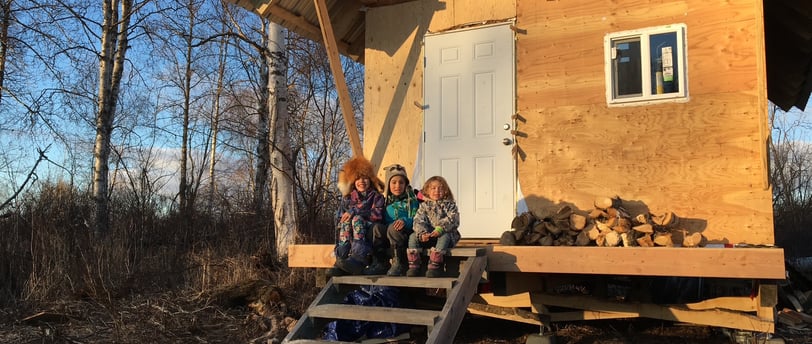

Keep it simple. Keep it real.
Living “off the grid” is a way to live sustainably with the resources around you. I grew up without running water in the small village of Shageluk, and while we did have and utilize electricity, there were many things that we did that were entirely sustainable. And on top of that, I’m from here. My ancestors have lived here since…forever, and we know how to live and how to live well on our lands. Plop me somewhere else in the world, I would be clueless.
So that gives you just a tiny bit of context about me, my perspective, my worldview, and my upbringing. And for Chevie and I, together, we see value in loving the land, living off the land, and teaching our kids about this identity and relationship to land, place and people.
Let’s get back to “off the grid” living. Today, it’s a hype term to use, it’s seen as an idealistic way to live. But if we think about relationships, people, lifestyle, what we need, then it becomes much more than just grabbing some things and living in the woods. It’s about that context I mentioned earlier. It’s about relationships to land, place, self, those around you, and the values that are derived from those relationships. It is not just a lifestyle or way of life, it really is a quality of life that we aspire to have. And as you suspect, it does not always mean more. It means simple.
Think about the basics: food, shelter, warmth, clothing. When we were first building our cabin, location was key. Between the Yukon and Innoko River, the flats in the area are susceptible to flooding. We originally were looking at an area that that some nice spruce, further in the slough than we are now, and for about a year we eyeballed it and contemplated the access it had to water, to fish, to sunlight. After walking the site in the summer, we soon realized that we stood no chance against the mosquitoes. We had to be on the river.
The location we are now at is at the mouth of a slough, and it has good breeze to dry fish easily and keep those pesky mosquitoes away. Fishing, fish processing, and fish preserving (and other foods) are really key for efficiency for us. I have my fish drying rack up and a cutting table right off the river for ease of cleaning and drying. We haul fish up the bank from the boat right to the cutting table, have water from the river/slough for cleaning, and then dry the fish at the drying rack. It’s efficient, it’s the basics…and we would all much rather be outside busy than inside tripping over one another now that we’re a family of seven.
In the video, Chevie mentioned the outhouse and the steam bath. These are definitely essentials along with the smokehouse/fish cutting space. I’ll never forget the kids participating in painting the outhouse. Chevie had them helping him, and I think I was busy working on the main cabin doing who knows what. I went to check on the progress only to find Sydney, Ryder, and Emry with more paint on themselves than on the outhouse! We have a lot of good memories of the kids helping at the cabin on projects.
For beginners, there are very basic things to think about for efficiency and turn-key operations when coming and going: kettle, pots and pans for heating water and cooking, Rubbermaid wash bins for dishes, and a nice basin for washing up, basic cleaning products, a first aid kit, kerosine lamp and oil, head lamps and matches/lighters, and extra spare socks, sleeping bags, towels and camp shoes/boots. Often times, when you’re coming in from adventures and projects, it’s good to change or have spare socks if you’re wet and need to dry out. I have a wonderful memory of moose hunting when the three older kids were small. It was a beautiful crisp morning, and as we started cutting up the moose in the field we got poured on. We all came back soaked, and I was so thankful for the extra clothes we kept there and the dry socks for the kids. See, any way you can make things turn key and efficient makes all the difference. Dry out, regroup, and head back out!
Other details of the cabin I enjoyed figuring out – the cabinets are uppers that were on sale. We have a tiny fridge for keeping eggs or produce fresh. I purchased carpet squares to lay in the loft for the kids, and the couch is lined with outdoor cushions for easy cleaning and withstanding the wear and tear. All of our coffee mugs are our house rejects that have the handles missing. It works for us. And yes, Amazon has free shipping even to Alaska, so I purchased the light fixtures and any hardware from there.
Now, we have solar panels on site, and they work wonderfully. We turn the lights on at the cabin and play cards in the evening. Chevie reads Louis L’Amour books out loud to us when we’re needing some chill time, and we enjoy sharing the close-knit space the cabin provides. But we always are looking outside: what’s the weather doing? What animals are crossing? What birds are flying? What’s the wind doing? It’s simple, it brings us joy, happiness, and lots of memories. Thanks for hanging out with us, visiting us on social media and on YouTube! Don't forget to check out our storefront and supply lists!
